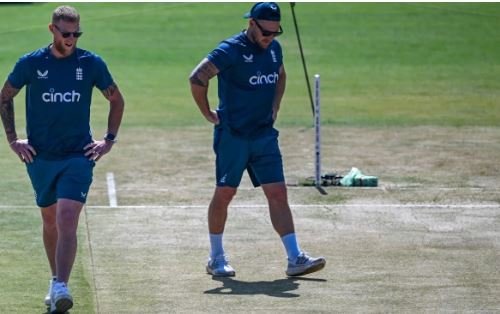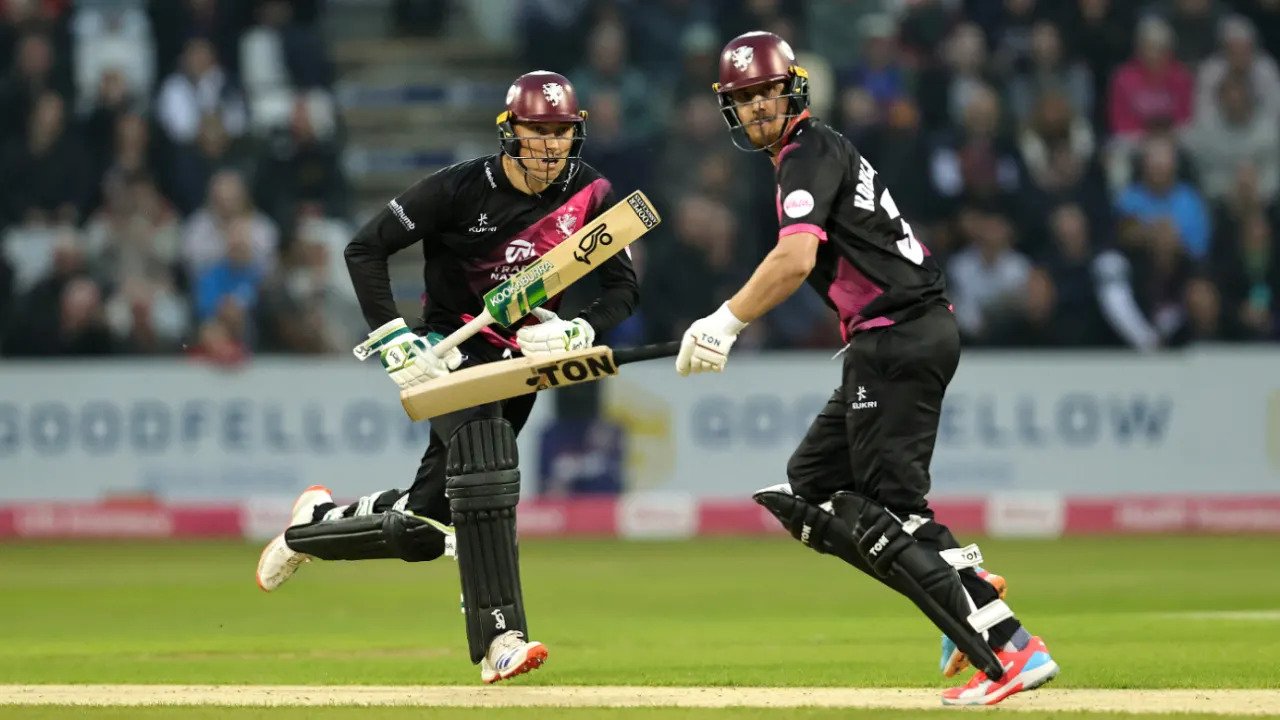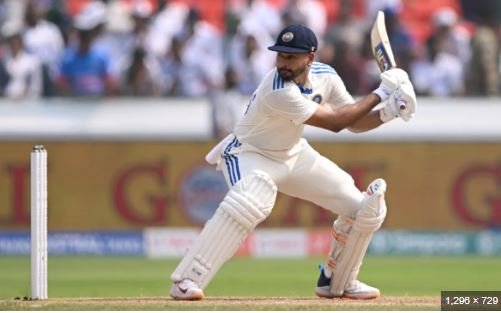India prepares for Bazball rhythms on a Rajkot ground that can be flat
India may be concerned if the surface’s appearance is any indication, but Jadeja advises bowlers not to “react” to England’s batting approach.
It has a slight green tint to it, but that is typical of a Rajkot pitch. When India and England started a Test series here in 2016, there was grass on the surface as well. This annoyed Virat Kohli, not because it made things more exciting for the fast bowlers (which it didn’t), but rather because it kept the pitch cohesive too much for his spinners to be involved in the game.

Although that match ended in a draw, England might have won if they had played a little less conservatively. They gave India a target of 310 when they declared halfway in the second session of day five, giving themselves just enough time to take six wickets and daydream.
England will be reminded of Rajkot 2016 by the pitch for the 2024 Rajkot Test, but they may also be reminded of a much more recent match: Rawalpindi 2022.
Similar to Rajkot 2016, Rawalpindi 2022 was lackluster, although England 2022 was a very different team from England 2016. They had evolved into a club capable of scoring well over a run per ball and stealing 921 runs in two innings. Even though they only batted for 136.5 overs, they scored that many runs. Compute the length of a weather-free Test match: four hundred and fifty overs. On one of the flattest surfaces in history, the math of Bazball gave England’s bowlers enough time to finish a historic victory in the last light of the fifth evening.
If the pitch’s appearance is any indication, Rajkot 2024 may resemble Rajkot 2016, which could alarm India given England’s ability to pull off a Rawalpindi 2022.
It will undoubtedly cause India’s bowling attack concern. Their offense, in Rawalpindi, has demonstrated that it is still adjusting to the Bazball obstacle, although being significantly more experienced and of higher quality than Pakistan’s. Although Jasprit Bumrah has been extraordinary, the spinners have not yet shown their true colours in this series; going into the third Test, their combined average is lower than that of England’s spinners.
Early series setbacks are nothing new for R Ashwin and Ravindra Jadeja; on each occasion, they have bounced back to reclaim their position as the dominant players. They also achieved this in 2016, bowling India to a 4-0 series victory following a collective score of 6 for 363 in that Rajkot draw.
They’re that excellent, so you could probably bet on them accomplishing it again, but it won’t be simple. Jadeja is 35 years old, and Ashwin is 37. Jadeja is recuperating from a hamstring strain. They are going to bowl on a pitch that is probably going to be loaded with runs, against this England lineup.
On the eve of the Test match, Jadeja observed, “The wicket is usually flat and hard.” “However, that relies on the preparation method. It is possible to score 37 wickets in three matches at times. However, judging by this wicket, it appears to be difficult. However, the wicket acts differently in every match you play here. It can play well for the first two days, then turn and stay low, or it can be quite flat at times and turn at other times. This wicket, in my opinion, will play nicely at first before breaking and twisting gradually. That’s my opinion.
One could argue that the significance of Bazball in this series has been exaggerated a bit. With totals of 246, 420, 253, and 292 made, England may be down 2-0 if it weren’t for an innings of brilliance from Ollie Pope. But the series is tied 1-1, and nothing makes Bazball more dangerous than the possibility of a level field.
At least half of Jadeja’s press conference on Wednesday was devoted to answering inquiries about England’s batting strategy and how it impacts his role as a spinner.
In response to one of them, he stated, “I think it’s better for you in Test cricket the more you keep things simple.” “Their batsmen try to hit shots everywhere, so as a bowler, you have a chance to succeed if you keep things simple and encourage them to try more things.” You’ll end up leaking more runs and failing to take wickets if you start bowling occasionally in response to their batting style. I think you should let them have their way and keep things simple. You have a better chance of winning if you adhere to your strategy and line of attack.”
Being a bowler, you should know this basic, obvious fact. Regardless of what the batting team tries to accomplish, a strong, consistent line and length is more likely to result in wickets and limit the number of runs scored. However, even with Jadeja’s level of skill and experience, it can be difficult to put that understanding into practice if a batting team is taking chances and those chances are failing over an extended period of time. Your rhythm is likely to suffer because, even if you stick to your lines and lengths, at some time you will have to push fielders back to protect the boundary, which means the strike rotates more frequently. There’s a higher chance of this vicious cycle occurring on flatter terrain.
Naturally, there is another aspect to this, which is that England’s weak spin attack will need to use the same surface for bowling. They will, however, be bowling against one of the least experienced Indian lineups in recent memory, one that probably includes another rookie behind the stumps in Dhruv Jurel, along with Rajat Patidar and Sarfaraz Khan, two No. 4 and 5 players who have only one previous Test cap between them.
India’s batsmen may have lacked a certain amount of ruthlessness in Hyderabad and Visakhapatnam, missing opportunities to keep England out of games. If the pitch in Rajkot turns out to be the kind of flat subcontinental surface where 500 isn’t a safe first-inning total, then there could be dire consequences.
By highlighting their considerable body of work in red-ball cricket—between them, they have 26 hundreds in 101 first-class games—and the fact that they have had to wait a long time behind the productive, enduring middle order of Cheteshwar Pujara, Virat Kohli, and Ajinkya Rahane, Jadeja downplayed the inexperience of Patidar and Sarfaraz.
“The new players who have come in, they have played a lot of first-class cricket,” Jadeja stated. “They don’t just play for one season and then join the Test squad. These are seasoned first-class players who understand the rigors of extended innings and Test cricket. And whether it’s two years from now or five years from now, this [transition] time is unavoidably approaching.
It’s encouraging that they are having this opportunity in their own India, and they will quickly establish themselves in the Test squad. They might not be as confident in their ability to perform if they make their debut in South Africa or Australia. They have played a lot of cricket on these wickets and have a strong understanding of what will and won’t happen there, so this is the perfect position for them to be in India. I think this is a wonderful moment for them to take advantage of this opportunity and perform well in this series.”
They’ll be hoping they can, as the stakes are very high and the stage may be unfriendly—a high-scoring surface that would be ideal for Bazball’s rhythms.




